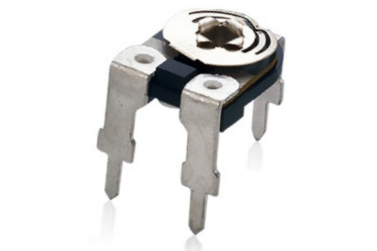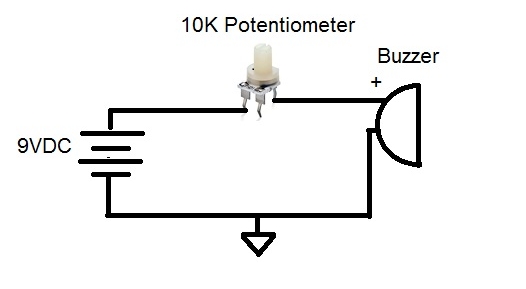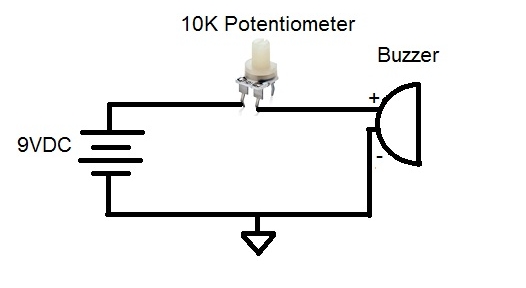How to Connect a Potentiometer in a Circuit

A potentiometer is a useful device, because by just simply adjusting it, it can be used to represent a wide range of resistances in a circuit from anywhere near 0Ω to the specified resistance rating of the potentiometer. Therefore, for example, a 10KΩ potentiometer can be adjusted to give the resistance range from almost 0Ω to 10KΩ by adjusting the potentiometer knob.
Imagine if potentiometers were not available. The only way to adjust resistance values would be to physically take out the fixed resistor in the circuit and replace it with a fixed resistor of the desired value. This would be physically exhausting, tiresome, and time-consuming, and for a typical user of electronic devices may not be possible if the user doesn't have experience in swapping out resistors. But with potentiometers, this is not necessary because potentiometers can easily be adjusted to provide a range of resistance values by just adjusting a knob.
Potentiometers are in wide use in circuits for a variety of uses, but their main fuction remains the same: to increase or decrease the gain of a signal in a circuit. When the resistance of the potentiometer is decreased, the gain of the signal increases. When the resistance is increased, the gain of the signal decreases. This can be used in circuits to control volume levels such as on speakers. When you increase the volume of speakers, you're actually decreasing the resistance of the potentiometer. And when you decrease the volume, you're increasing the resistance of the potentiometer. Potentiometers are also used with microphones. Having the same function, they can increase or decrease the gain of a microphone by adjusting the resistance values of the potentiometer.
With all these important, common uses of potentiometers, it is crucial to know how to connect them in a circuit.
When a potentiometer is connected to a circuit to allow for adjustable resistance, it is usually connected this way:

Here the potentiometer is hooked up to allow for variable resistance to be connected in series with the buzzer.
The input source, in this case, the 9V DC power
source, goes
into either one of the terminal leads of the potentiometer and the component that will be connected in series with the variable resistance, in this case,
the buzzer, is connected
to the wiper (middle lead) of the potentiometer. Note that the positive side of the buzzer goes into the wiper of the potentiometer. The other terminal lead is
left open with nothing connected to it.
When the knob is turned all the way to one side, the potentiometer has a resistance of near 0Ω and when the knob of the potentiometer is turned all the way to the
other side, the potentiometer has a resistance of 10KΩ. In between these two resistances, the potentiometer can hold any resistance between 0Ω and 10KΩ. This is how
a potentiometer works.
Now if a potentiometer is hooked up like it is below, with the input and output connected to both terminal leads while leaving the wiper open, it acts like a fixed resistor:

Here the potentiometer is hooked up to provide a fixed resistance of 10KΩ. If you hook up a potentiometer so that you connect the input source to one lead terminal and the output to the other lead terminal while disregarding the wiper, it will function just like a fixed resistor. In this case, the resistance cannot be adjusted, since no part of the circuit is connected to the wiper terminal, which gives the adjustment for a potentiometer. Normally, this is not how you want to use a potentiometer because in a case like this, you could just use a regular fixed 10K resistor. However, this makes an educational point of how a potentiometer would function if you connect it this way.
To see a video of this, check out our potentiometer wiring video at the following link:
How to Connect a Potentiometer in a Circuit.
Related Resources
Linear Taper Potentiometers
Log Taper Potentiometers
Audio Taper Potentiometers
